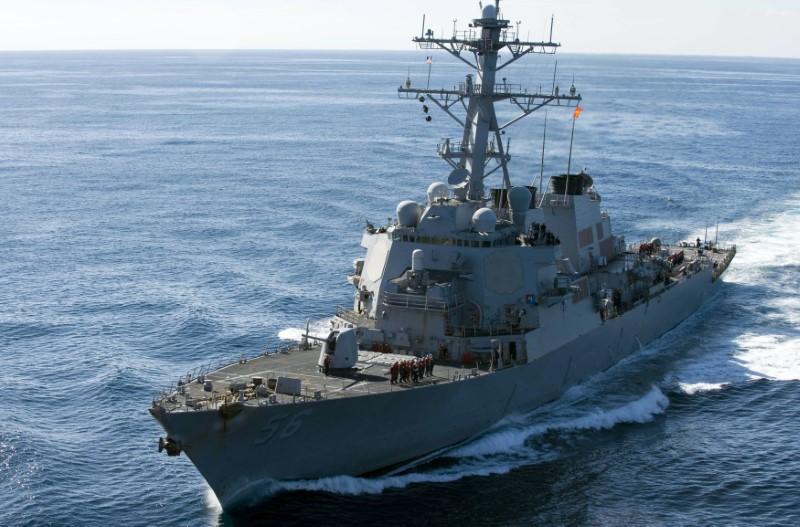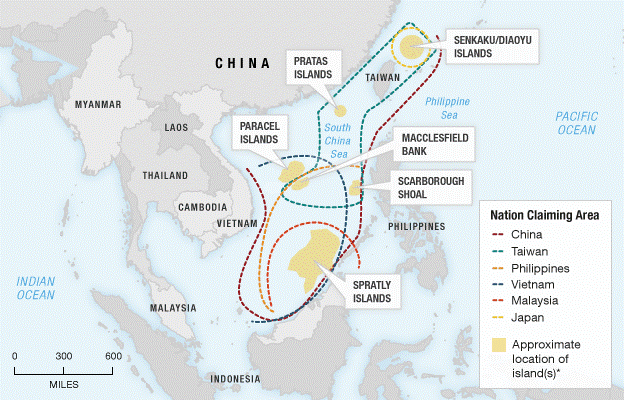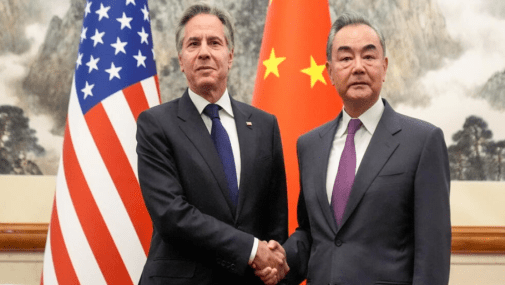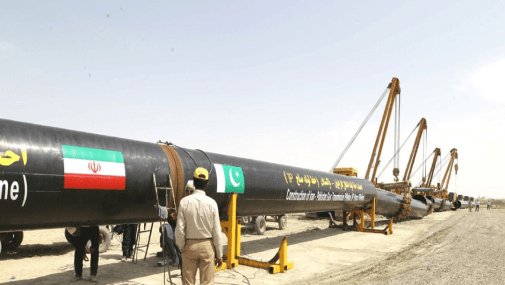Conflict over South China Sea
August 11, 2017 | Expert Insights

A US destroyer has sailed past one of China’s man-made islands in the South China Sea. This was part of the US’ freedom of navigation operation.
China has responded strongly to this action deeming it a “provocation” from the United States.
Background
The South China Sea is at the heart of a land and water dispute between China, the United States and much of Southeast Asia. China’s claim to the region is historic going back to the Xia and Han dynasties. The US has maintained that region was part of the international waters. Other countries that are disputing South China Sea include, Malaysia, Indonesia, the Philippines, and Vietnam.
One of the reasons why the South China Sea is so vital to these countries is due to the strategic advantage it provides. If China had complete control of the region, then it would be able to control a major trade route. It would be able to disrupt trade shipments that pass through this region to East and Southeast Asia. Currently, $5.3 trillion worth of trade passes through the South China Sea.
Analysis

China has been particularly aggressive in the recent months when it comes South China Sea. Tensions between the US and China have persisted over this issue.
In the most recent incident, the US destroyer called the USS John S McCain destroyer sailed within six nautical miles of Mischief Reef. This is one of the disputed areas in the region. The Chinese military had reportedly told the US to turn around 10 times during the Fonop (freedom of navigation) operation. The US operation lasted six hours.
Geng Shuang, the Foreign Ministry spokesman of China said that this move from the US "severely undermines China's sovereignty and security, and severely endangers the safety of frontline personnel of both sides. The US destroyer’s actions have violated Chinese and international laws, as well as severely harmed China’s sovereignty and security. China is very displeased with this and will bring up the issue with the US side.” Shuang added that this will "compel China to take measures to further raise its capacity to defend national territory.”
Pentagon spokesman Lieutenant Colonel Chris has responded noting, “We are continuing regular Fonops, as we have routinely done in the past and will continue to do in the future. All operations are conducted in accordance with international law and demonstrate that the United States will fly, sail and operate wherever international law allows.”
Assessment
Our assessment is that the conflict over the South China Sea is unlikely to solved through bilateral talks. It is possible that the other parties involved can force an international arbitration that will definitively provide resolution to the matters.








Comments